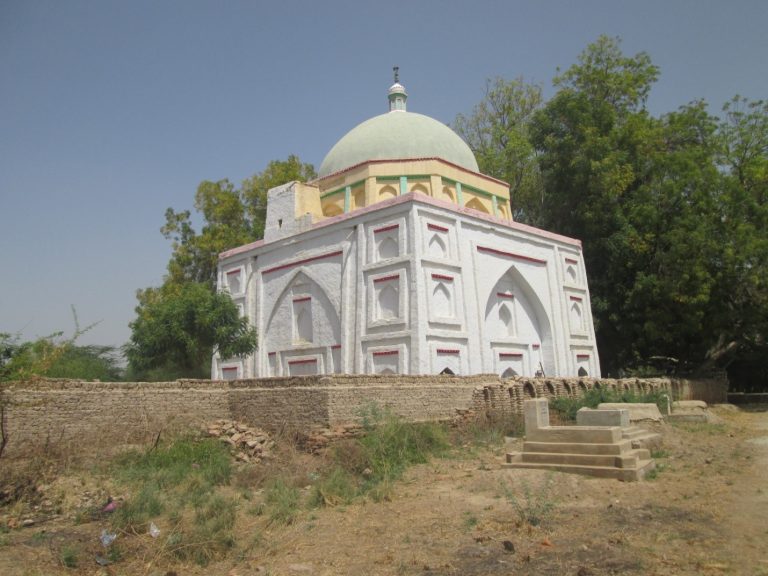
According to some references Hazrat Ibrahim Shah was a Saint belonging to Kalhora period but there is no any authentic historical account available about the saint and his biography.
Quratulain Kareem
As discussed in my previous blogs, the Behlani town of Naushehro Feroze district of Sindh, bears a historic importance being an ancient settlement and the home to early 20th century buildings of British colonial era. There also exists a mausoleum known as the ‘mausoleum of Hazrat Ibrahim Shah Behlani’, and it is thought that this town got its name from the Saint Ibrahim Shah Behlani. Several aspects of the history of this town still remain a mystery, as no proper research has so far been carried out by the concerned institutions and historians of Sindh.
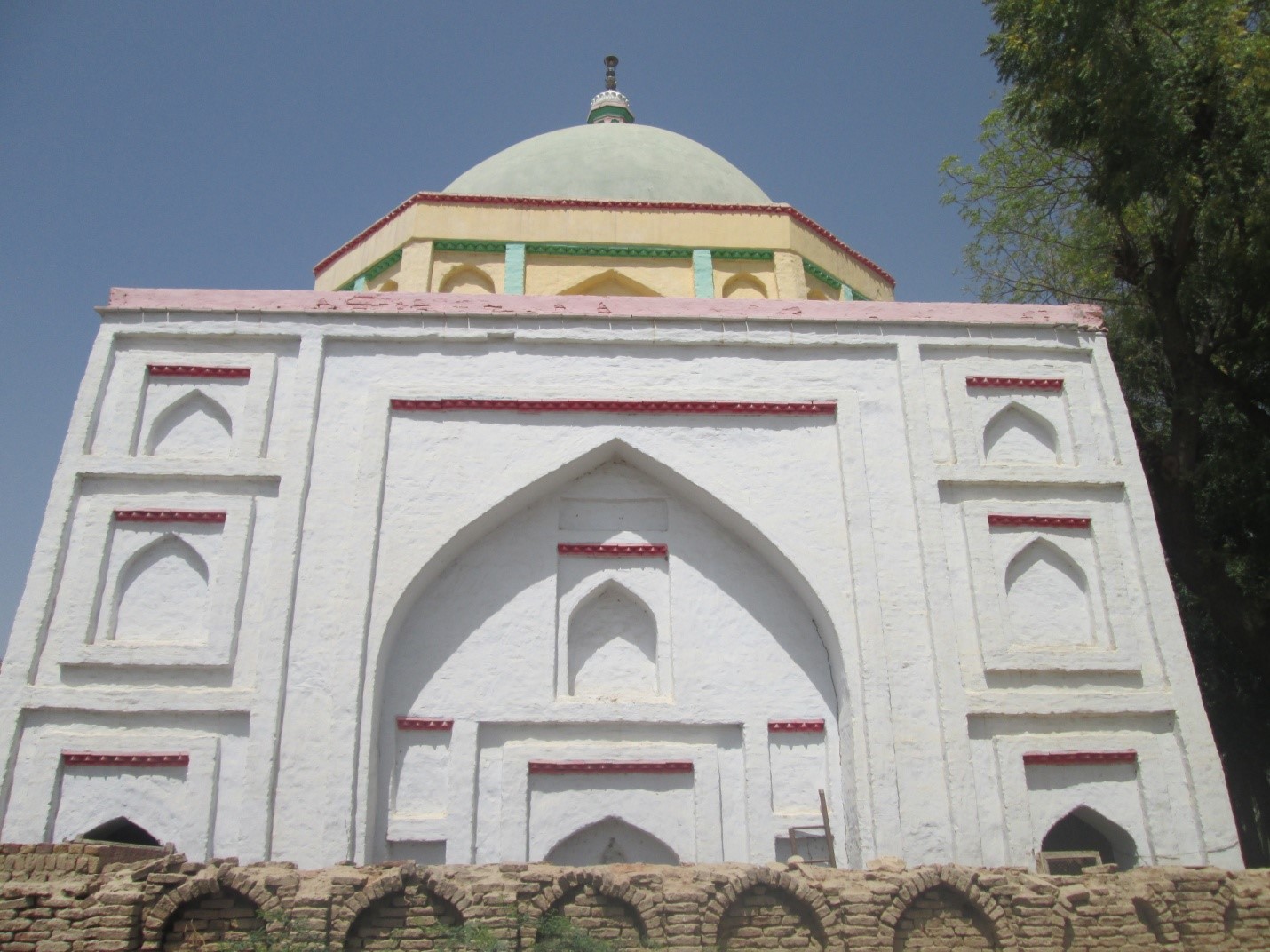
Mausoleum of Hazrat Ibrahim Shah Behlani is surrounded by a graveyard. The mausoleum contains two structures – one for burial of females and the second for male burial. Both the structures are constructed with mud bricks and there is no use of iron in it. Male visitor can’t enter into female burial place because ‘Mujawar’ claims that the respectable lady members of the family of saint are buried there.
Structure for Female burial is rectangular in shape with three pointed arched entrance from north direction bordered with blue color having central semi-circular dome with small cupola and finial on it along with two small domes on both of its sides. Inside the structure for female burial there are few graves which are supposed to be of ladies belong to the family of Hazrat Ibrahim Shah and there are some triangular shape sacred ritual objects made of cotton hanging on its four corners.
Structure for male burial is a tomb constructed on square platform with octagonal base dome and having arch panel on its all four elevations with fusion of Mughal and Kalhora architecture and surrounded by naked brick arched balustrade. Inside the structure for male burial there are also some graves which are supposed to be of gentlemen belong to Hazrat Ibrahim Shah. Most attracting fact about this tomb is painted frescos inside the tomb with beautiful contrast of colors and floral designs. The purposes of floral frescos paintings inside tombs are there to help the buried dead bodies in the afterlife.
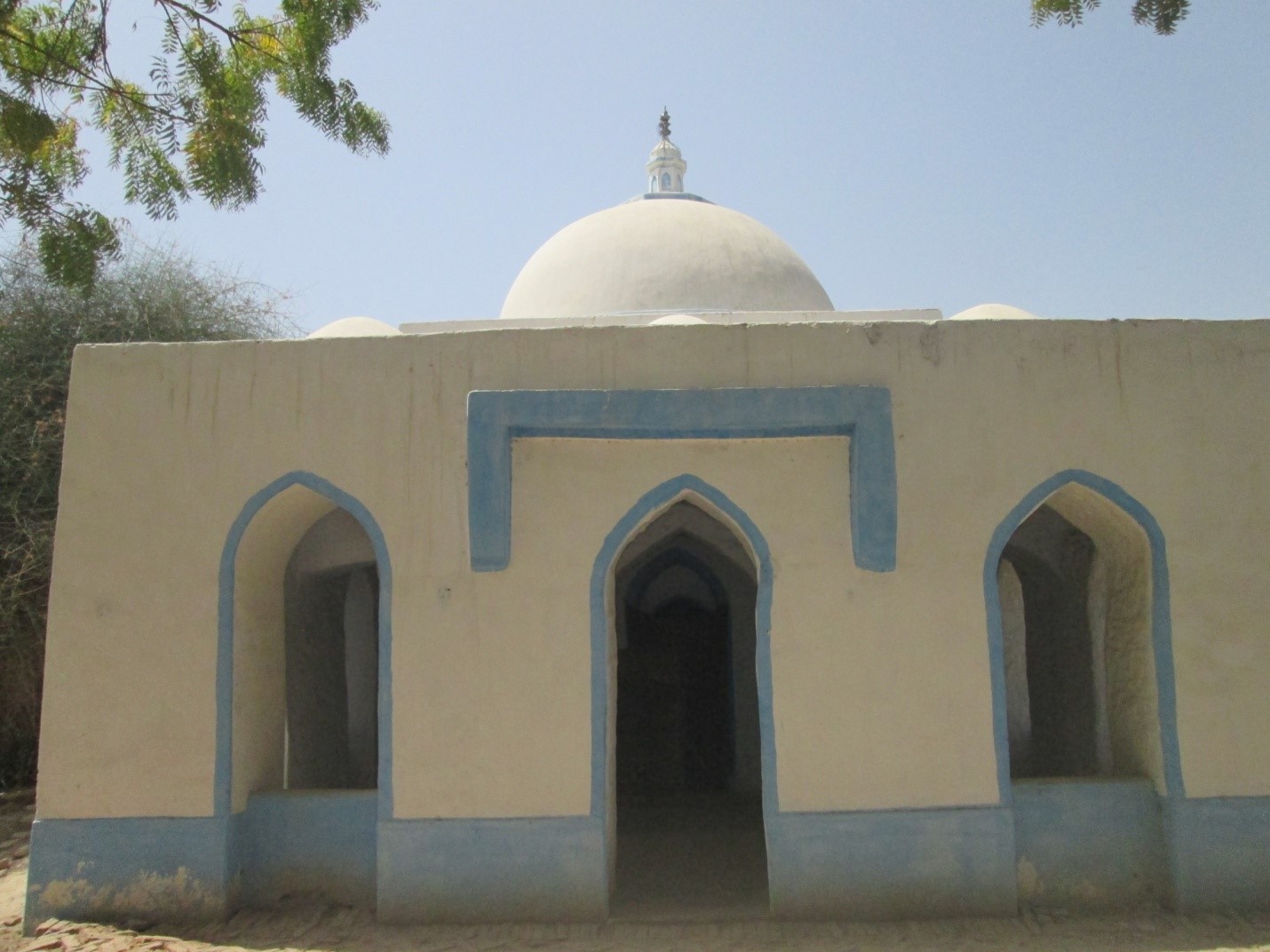
During the Kalhora period wall frescos inside tombs were more common. They often depicted folk tales, scenes from rustic life, the tribal chiefs and their battles. Although frescoes developed in Italy from about the thirteenth century and perfected during the Renaissance but how and when they came from Italy to Sindh, it’s another dimension of research.
Usually mausoleums provide a peaceful place for loved ones to pay their respects. Many ancient civilizations built mausoleum to commemorate the dead, and this practice became increasingly popular in Sindh also; many mausoleums have been erected in Sindh during different periods for loved ones.
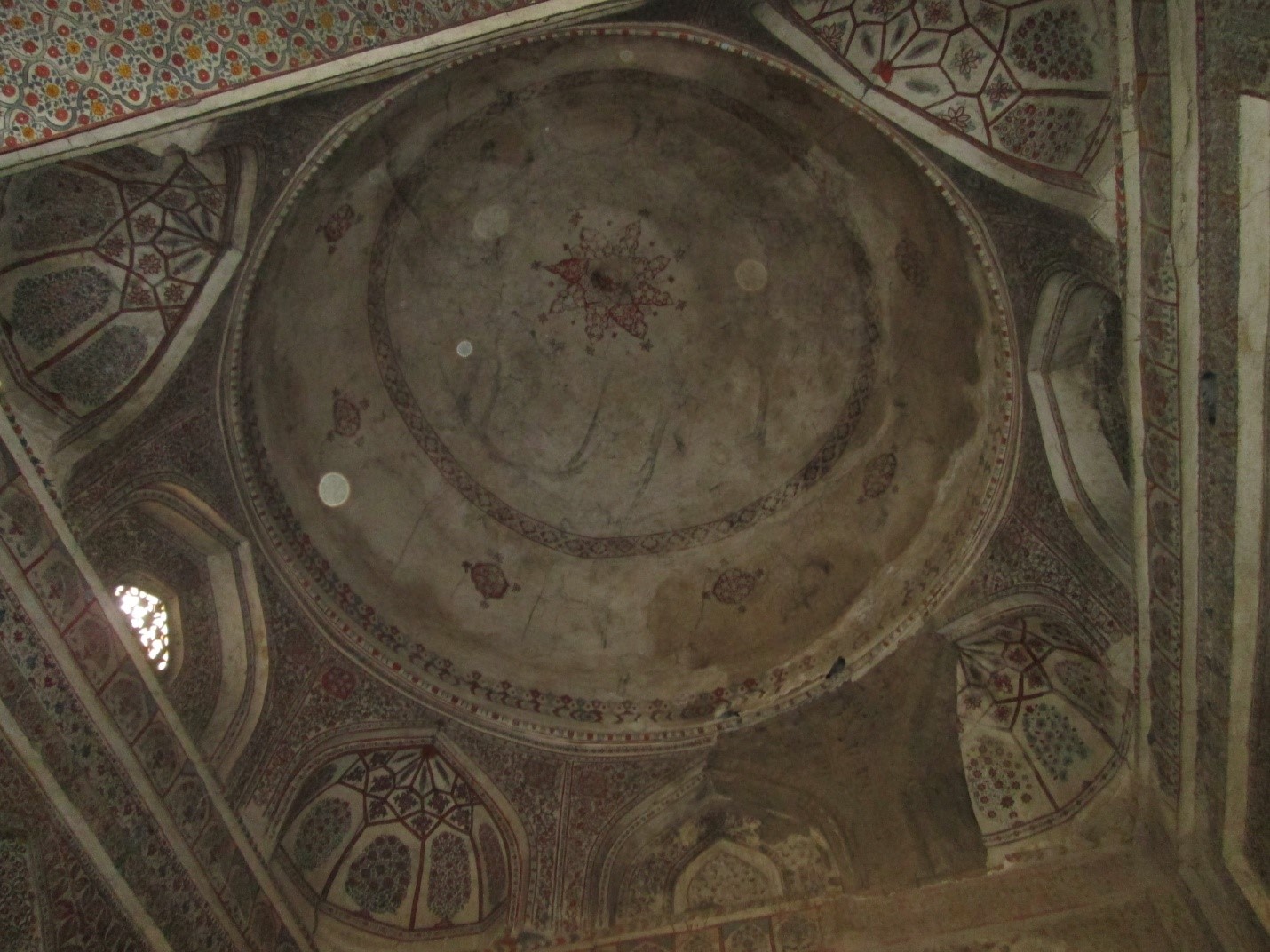
According to some references Hazrat Ibrahim Shah was a saint belonging to Kalhora period but there is no any authentic historical account available about the saint and his biography. Some inscriptions on the interior walls of tomb are yet to be deciphered which might prove to be useful to decode the many hidden dimensions related to tomb construction and background of saint. Despite of mystery shrouding the mausoleum and Hazrat Ibrahim Shah, the wonderful floral frescoes inside structure for male burial tomb make this heritage worth to preserve and conserve in order to celebrate the beauty of painted frescoes and appreciate the artistic skills of artists of that time.
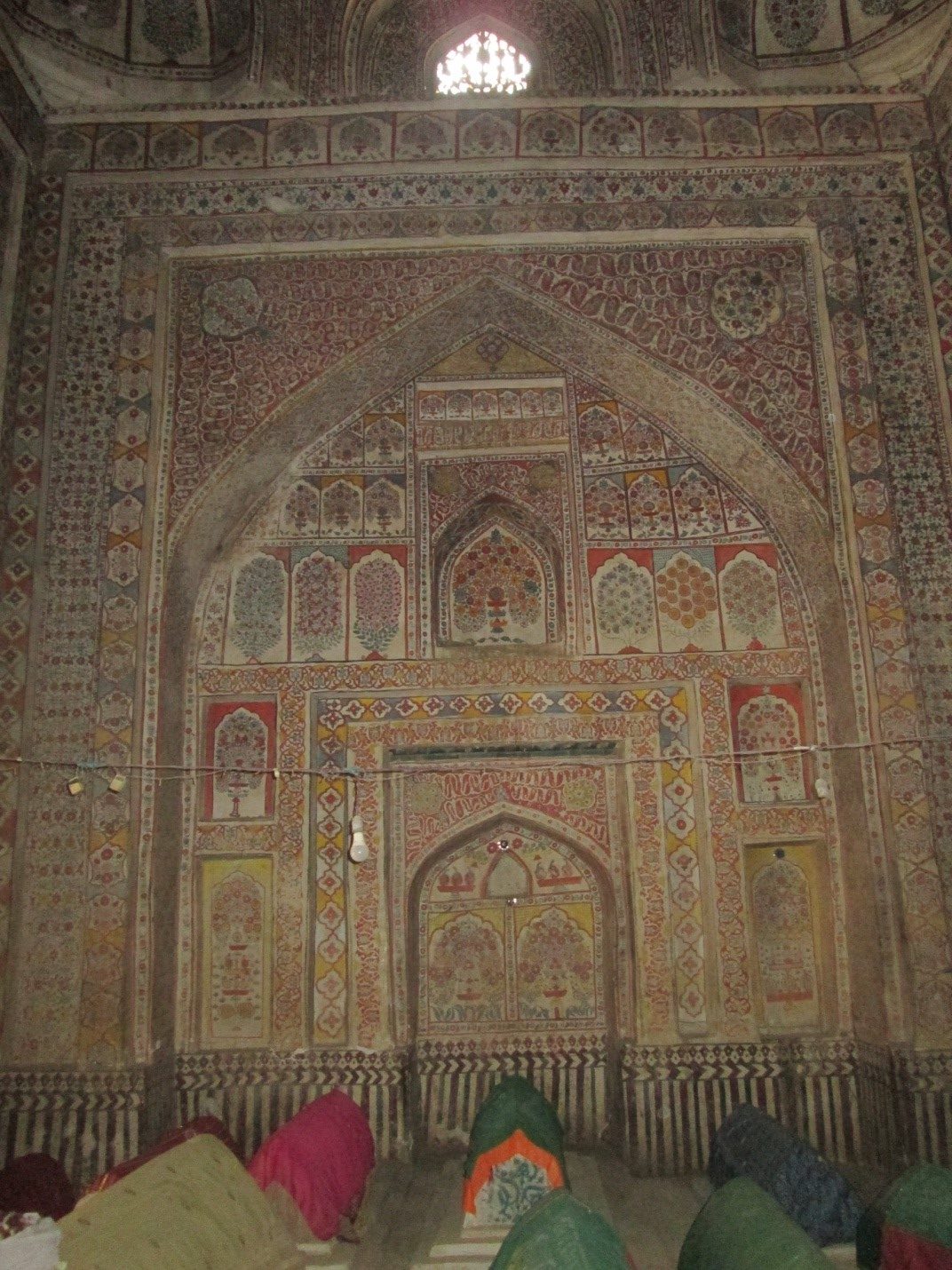
The preserving of these floral frescoes depicted in mausoleum of Hazrat Ibrahim shah Behlani and other frescoes depiction in various other tombs associated with Kalhora period, will be helpful in reconstruction of folk tales; scenes from daily life, tribal chief’s dressing patterns, battle scenes as well as favorite floral designs and patterns from Kalhora period which can ultimately revive the lost glory of Kalhora rule.
__________________
Quratulain Kareem is Teaching Assistant at Department of Anthropology & Archaeology, University of Sindh. (Photo Courtesy: Author)